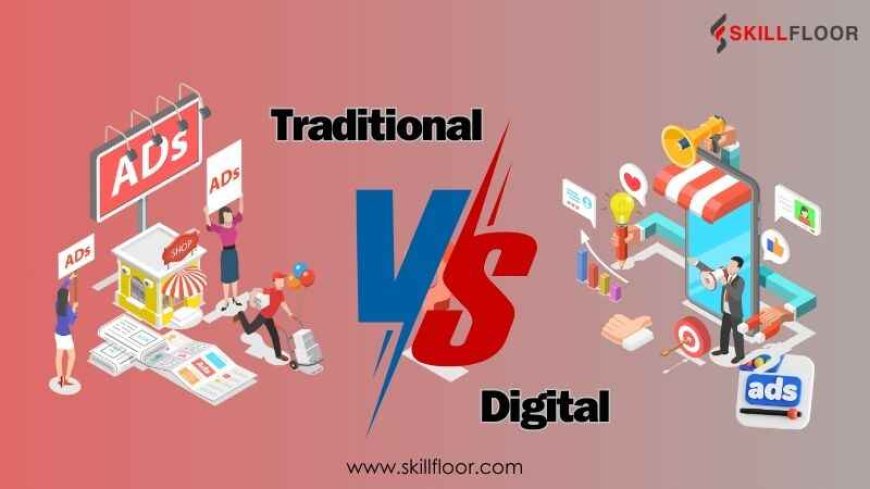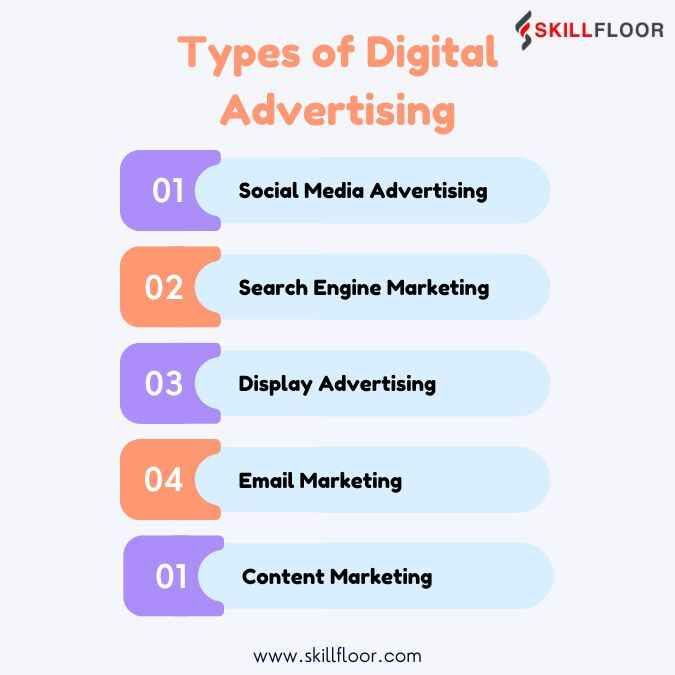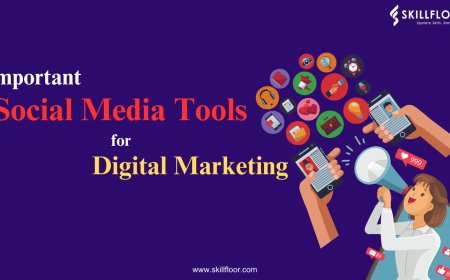The Scope of Advertising: Traditional vs. Digital Methods
Explore the scope of advertising by comparing traditional and digital methods, highlighting their differences, benefits, and impact on modern marketing strategies.

The scope of advertising has changed a lot over time, bringing both traditional and digital methods into the mix. Traditional advertising methods, like print media, television, radio, and outdoor ads, have been around for a long time. These methods can reach a broad audience and are something people are used to seeing. They are great for targeting local markets and building brand awareness. However, traditional advertising can be more expensive and doesn’t always offer the precise targeting and measurable results that digital marketing can.
On the other hand, the scope of advertising in the digital world offers more flexibility and can be more budget-friendly. Digital marketing includes social media, email marketing, search engine optimization (SEO), and pay-per-click (PPC) advertising. These methods allow businesses to reach specific groups and track their campaigns in real time. Digital marketing also allows for more interactive and engaging content, helping to build stronger customer relationships. As the digital landscape continues to grow, the scope of advertising will likely shift more toward digital methods, providing businesses with new and exciting ways to connect with their audiences.
Traditional Advertising
Types of Traditional Advertising
Traditional advertising includes various long-established channels such as:
-
Print Media: Newspapers, magazines, brochures, and flyers. Print media is appreciated for its tangible nature and reliability.
-
Broadcast Media: Television and radio commercials offer wide reach, particularly effective for local businesses. These media types can create a strong emotional connection through audio-visual storytelling.
-
Outdoor Advertising: Billboards, posters, and transit ads capture the attention of commuters and pedestrians. They are effective for high-frequency exposure in specific geographic areas.
-
Direct Mail: Personalized letters, catalogs, and postcards delivered to homes can be highly targeted and engaging.
Advantages of Traditional Advertising
-
Broad Reach: Traditional media can reach a wide audience, making it ideal for brand awareness campaigns.
-
Credibility and Trust: Established media outlets, such as reputable newspapers and TV channels, lend credibility to the advertised message.
-
Tangible Impact: Physical materials like magazines and brochures create a lasting impression and can be revisited multiple times.
-
Local Targeting: Traditional advertising can effectively target local audiences, particularly through radio and outdoor ads.
Limitations of Traditional Advertising
-
Higher Costs: Producing and placing ads in traditional media can be expensive, especially for small businesses.
-
Limited Measurability: Tracking the effectiveness of traditional ads is challenging, making it hard to measure ROI accurately.
-
Static Content: Once printed or aired, traditional ads cannot be modified, limiting flexibility.
-
Decreasing Engagement: With the rise of digital media, traditional channels are seeing declining engagement, especially among younger audiences.
Digital Advertising
Types of Digital Advertising
Digital advertising leverages the internet and electronic devices to deliver targeted messages to consumers. Key types include:
-
Social Media Advertising: Platforms like Facebook, Instagram, Twitter, and LinkedIn offer highly targeted ad placements based on user demographics, interests, and behaviors.
-
Search Engine Marketing (SEM): Paid search ads on platforms like Google and Bing allow businesses to appear at the top of search results for relevant keywords.
-
Display Advertising: Banner ads, video ads, and rich media ads displayed on websites and apps help increase brand visibility.
-
Email Marketing: Targeted email campaigns can nurture leads, promote products, and maintain customer relationships.
-
Content Marketing: Sponsored content, native advertising, and influencer partnerships enable brands to engage with audiences through valuable and relevant content.

Advantages of Digital Advertising
-
Precise Targeting: Digital ads can be precisely targeted based on a multitude of factors, including location, age, interests, and online behavior.
-
Cost-Effective: Digital advertising often requires lower budgets than traditional methods, with flexible spending options and cost-per-click (CPC) or cost-per-impression (CPM) models.
-
Measurable Results: Advanced analytics tools provide detailed insights into ad performance, allowing for real-time adjustments and accurate ROI measurement.
-
Engagement and Interaction: Digital ads can be interactive, encouraging users to click, share, and engage with the content.
-
Flexibility and Adaptability: Digital campaigns can be quickly adjusted based on performance data, ensuring optimal results.
Limitations of Digital Advertising
-
Ad Fatigue: Consumers are exposed to a high volume of digital ads, leading to ad fatigue and potential ad-blocking.
-
Privacy Concerns: Increased scrutiny on data privacy and regulations like GDPR can impact targeting capabilities.
-
Competition and Clutter: The digital space is crowded, making it challenging for brands to stand out.
-
Dependence on Technology: Digital ads rely on technology, which can sometimes fail, leading to issues like ad fraud or technical glitches.
Comparing Traditional and Digital Advertising
Reach and Engagement
Traditional advertising methods like TV and radio can reach a broad audience, including those who are not active online. However, digital advertising offers more precise targeting capabilities, allowing businesses to engage with specific segments of their audience more effectively. Digital ads can also facilitate higher engagement through interactive content and social media interactions.
Cost and ROI
Traditional advertising methods can be costly, particularly for small businesses. In contrast, digital advertising is often more affordable and provides a higher ROI due to its precise targeting and measurability. Digital platforms allow advertisers to set their budgets and scale campaigns based on performance, making it easier to control costs.
Flexibility and Adaptability
One of the significant advantages of digital advertising is its flexibility. Digital ads can be adjusted or paused in real time based on performance data, allowing for quick responses to market changes. Traditional advertising, on the other hand, is less adaptable. Once a print ad is published or a TV commercial is aired, making changes can be costly and time-consuming.
Measuring Success
Measuring the success of traditional advertising campaigns can be challenging. Metrics like TV ratings or newspaper circulation provide only a rough estimate of reach and impact. Digital advertising platforms, however, offer detailed analytics, allowing businesses to track clicks, impressions, conversions, and other key performance indicators (KPIs) with precision.
Finding the Right Balance
-
Know Your Audience: Understand where your target audience spends their time and how they consume media. This knowledge will help you allocate your advertising budget effectively.
-
Set Clear Goals: Define your advertising objectives and choose the methods that best align with these goals. For example, if brand awareness is your primary goal, traditional media might be more effective. If driving online sales is the focus, digital advertising would be a better fit.
-
Test and Learn: Experiment with different advertising methods and measure their impact. Use the insights gained to refine your strategy and improve future campaigns.
-
Integrate Your Efforts: Create integrated campaigns that combine traditional and digital advertising to maximize reach and engagement. For instance, a TV commercial can drive viewers to a website or social media page for further interaction.
-
Stay Updated: The advertising landscape is constantly evolving. Stay informed about the latest trends and technologies in both traditional and digital advertising to keep your strategy current and effective.
Understanding the scope and impact of traditional and digital methods is crucial for developing an effective marketing strategy. While traditional advertising offers broad reach and credibility, digital advertising provides cost-effective, targeted, and measurable solutions. By finding the right balance and leveraging the strengths of both approaches, businesses can create comprehensive campaigns that resonate with their audience and achieve their marketing goals.




























































